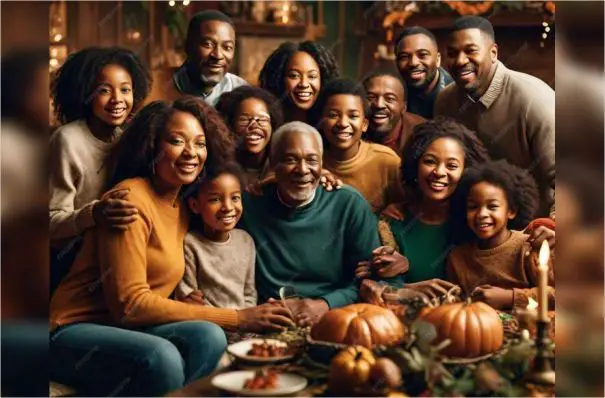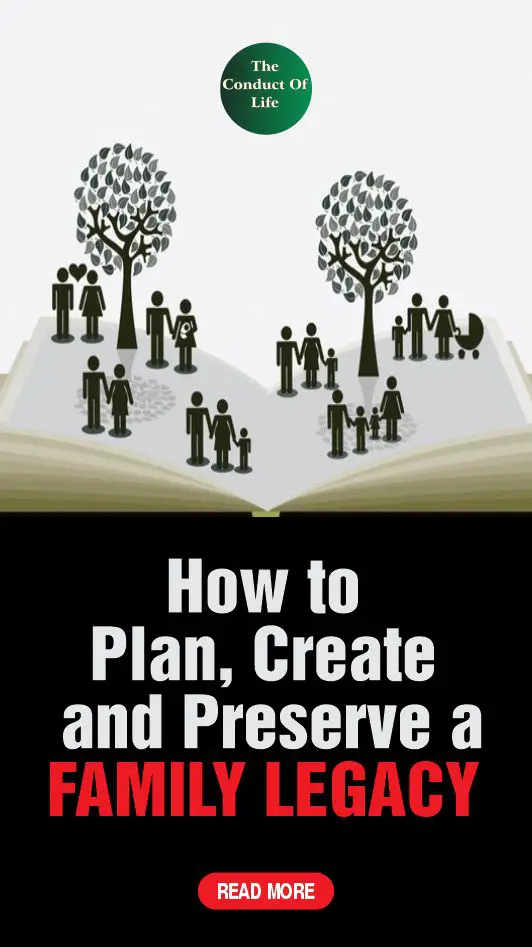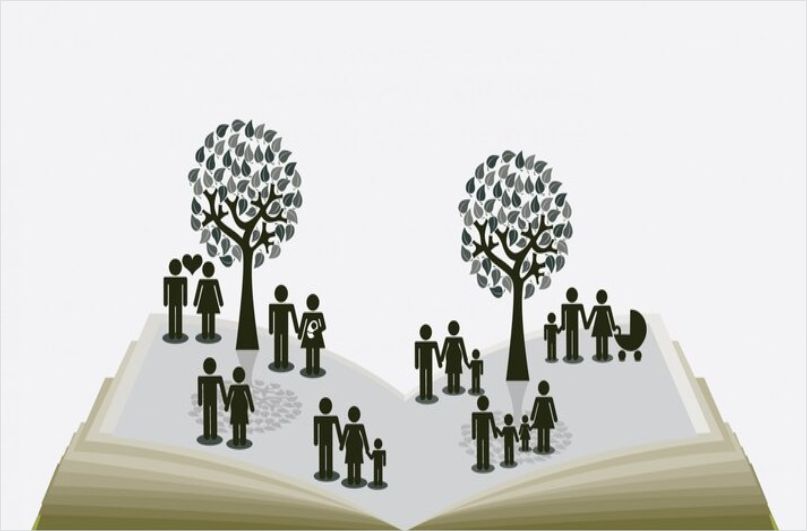Last updated on December 7th, 2025 at 07:36 pm
A family legacy is built over time, shaped by the values, traditions, and decisions that each generation passes down. Here is what it is and how to create it.
Ancestral legacy is not solely about wealth or property but the lessons, culture, wisdom, and identity that create a lasting bond.
Strong families build legacies and impact through values, financial planning, and traditions, preserving history with stories or focusing on education, philanthropy, and business for future generations.
Every action, big or small, contributes to what future generations will inherit.
A well-built legacy strengthens family unity, ensuring that knowledge, resources, and values continue to benefit those who come next.
Key Takeaways:
- A family legacy includes values, traditions, and wealth passed down across generations, shaping future identity.
- Preserving cultural roots and teaching values create a sense of belonging and purpose for younger generations.
- Estate planning and financial management help preserve family wealth and align with family values for inheritance.
- Involving younger generations ensures that the family legacy adapts while retaining its core traditions and values.
Table of Contents
- What is a Family Legacy?
- The Importance of Family Legacy
- Key Elements of Family Legacy
- Family Legacy Planning, Creation, Preservation, and Passing Down to Future Generations
- Challenges in Preserving Family Legacy
- How to Adapt Family Legacy to Modern Times
- The Intergenerational Impact of Family Legacy
- Frequently Asked Questions
- Conclusion
What is a Family Legacy?
A family legacy is the impact your family leaves for future generations. Unlike personal legacy or leadership legacy, it includes values, traditions, financial decisions, and the knowledge passed down over time, which can be through strong moral principles, wealth, education, or community service.
The Importance of Family Legacy
Ancestral legacy is more than a connection to the past, it is the foundation that shapes identity, values, and traditions for future generations.
Families that recognize their legacy strengthen their bonds, create a sense of belonging, and provide guidance that carries forward.
Here are reasons why family legacies matter:
Preserving Cultural Roots
Language, customs, and traditions keep a family’s heritage alive, providing future generations with a clear sense of identity and belonging.
Teaching Values and Life Lessons
Stories of resilience, wisdom, and integrity shape younger generations, helping them navigate challenges and make meaningful life decisions.
Strengthening Family Bonds
A shared legacy deepens family connections, creating unity through storytelling, traditions, and collective experiences passed down over generations.
Recommended: How to Create a Professional Legacy
Key Elements of Family Legacy

To truly build a lasting family legacy, it’s important to focus on the key elements that connect generations.
Traditions and values are at the core. These traditions could be simple rituals like family gatherings, holiday celebrations, or any custom passed down through the years.
They do more than just keep the family connected, they shape your identity and provide a sense of belonging.
Continuing these practices helps keep your family’s legacy strong and meaningful over time.
Let’s take a closer look:
The Role of Family Stories
Family stories are an important part of a legacy. Through oral history, stories pass on lessons of life, challenges, and triumphs that can shape how younger generations view their journey.
These stories add depth to the family’s identity, making it richer. To preserve these memories, you can record them in writing or create video archives.
Even something as simple as a storytelling night can keep these stories alive and accessible for years to come.
Tangible Aspects of Legacy
Family tradition preservation isn’t only about heritage gand stories; it also includes tangible elements like physical assets and finances.
Family legacy planning involves practical steps like creating wills and managing estate planning.
This helps make sure that wealth and assets are passed down fairly and responsibly.
It’s important to consider how these resources are divided and ensure that they reflect the family’s values.
By integrating both tangible and intangible elements, you can ensure your family’s legacy stands the test of time.
Recommended: How to Measure Legacy Impact
Family Legacy Planning, Creation, Preservation, and Passing Down to Future Generations

Family legacy planning is the process of intentionally creating a roadmap to preserve and pass down your family’s values, traditions, assets, and knowledge.
It’s about ensuring that the legacy you build today is preserved for future generations.
This process involves thoughtful discussions, decision-making, and actions that align your family’s goals with the long-term vision for the future. It’s not just about financial assets.
Here is how to achieve those:
Defining Your Family’s Core Values
Every family has core values or recurring traits they are known for. The first step in family legacy planning is understanding what values and principles you want to pass on.
This could include your family’s work ethic, generosity, integrity, or the importance of education.
Engage in discussions with family members to ensure everyone’s views are considered, creating a shared understanding of what your family stands for and wants to preserve.
Estate Planning and Financial Management
A large component of family legacy planning involves financial planning.
Estate planning ensures that your wealth and resources are transferred responsibly to future generations.
This includes drafting a will, setting up trusts, and making sure any assets, be they property, investments, or businesses, are distributed in a way that aligns with your family’s values.
Financial decisions today shape the opportunities for future generations, so it’s important to make these plans clear and equitable.
Passing Down Family Traditions and Stories
It also involves ensuring that important traditions, customs, and stories are passed down.
This could include family holidays, cultural rituals, or stories that carry lessons from past generations.
Documenting these traditions through writing, recordings, or family gatherings helps preserve a sense of shared history that unites family members and reinforces a connection to their roots.
Further Reading: What Happens to Your Social Media Accounts When You Die?
Involving Younger Generations
Involving younger family members in the planning process is key. This creates a sense of ownership and understanding of the legacy that is being built.
The younger generation can contribute their ideas, ensuring the legacy evolves with their perspectives while keeping core values intact.
By discussing and reflecting on the future together, families can help younger members understand the importance of the legacy and take an active role in preserving it.
Creating Family Legacy Projects
Another way to reinforce family legacy planning is by developing tangible projects that carry the family’s values into the future.
This might include starting a family foundation, funding scholarships, or supporting charitable causes.
These projects ensure the family’s commitment to making a positive impact is part of their long-term vision.
They also provide a way for future generations to contribute to society while reinforcing the core values the family holds dear.
Continuous Communication and Adaptation
Family legacy planning is not a one-time event but a continual process that evolves as the family grows and changes.
Communication is key to ensure that each generation stays connected to the family’s history and future vision.
Regular check-ins, family meetings, or retreats help keep everyone on the same page and allow for adjustments as circumstances change.
Related: What is a Legacy Letter?
Challenges in Preserving Family Legacy
Preserving your family legacy can feel overwhelming, especially as time passes and societal changes reshape values and traditions.
While it’s important to pass down meaningful elements of your family’s history, several challenges often arise along the way.
Let’s take a closer look at some common obstacles you might face in keeping your family legacy alive.
Changing Values Across Generations
As each generation matures, their values may shift. What was important to previous generations might not hold the same weight for younger family members.
This generational divide may create challenges in passing down traditions, particularly if they no longer align with current priorities.
Family Dynamics and Conflicts
Family conflicts often arise when it comes to preserving the family legacy.
Disagreements over inheritance, roles, and how traditions should be carried forward can strain relationships.
Open communication through family meetings is necessary to resolve conflicts and ensure everyone’s opinions are respected.
Adapting to Modern Contexts
In the digital age, preserving family history can be both easier and more complicated.
While technology offers ways to document and share stories, the challenge lies in ensuring privacy and authenticity.
It’s important to strike a balance between modern tools and family values.
Examples of Real-Life Family Legacy Stories
Looking at real-life family legacies can give you valuable insight into how lasting traditions shape societies and empower future generations.
Let’s take a closer shot at few examples of families who have left an indelible mark through their legacy.
The Kennedy Family: Legacy of Service and Social Change
The Kennedy family’s legacy is deeply rooted in American politics and public service.
From John F. Kennedy’s presidency to Robert and Ted Kennedy’s activism, their legacy has focused on social change and civic duty.
Their commitment to public service has inspired countless individuals to pursue leadership and fight for social justice.
The Rockefeller Family: Wealth and Philanthropy
The Rockefeller family is known for combining business success and philanthropy.
John D. Rockefeller built the Standard Oil empire, creating great wealth. However, it was his focus on giving back that defined the Rockefeller legacy.
Through charitable organizations like the Rockefeller Foundation, the family has supported education, health, and sustainability.
African Legacy: Storytelling and Tribal Heritage
In many African cultures, family legacy intertwines with tribal heritage. Storytelling plays a key role in passing down values and traditions.
These narratives help preserve a sense of identity and continuity, ensuring that generations remain connected to their ancestors’ wisdom and teachings.
Asian Legacy: Ancestral Respect and Collective Identity
In many Asian families, legacy revolves around respect for ancestors and family unity.
Decisions are often made with the collective good in mind, rather than individual desires.
The concept of honoring ancestors shapes how family members live their lives, making family legacy an important part of their cultural identity.
European Legacy: Lineage, Heritage, and Preservation
European families often focus on preserving lineage and heritage.
Historical estates, artworks, and heirlooms are passed down through generations as tangible connections to the past.
This form of family legacy highlights the importance of maintaining cultural history and passing down traditions through physical artifacts.
Native American Legacy: Land and Nature
For many Native American families, the family legacy is deeply tied to the land and nature.
The preservation of natural resources and the respect for sacred land are central to their identity.
Legacy is viewed as a connection to both their ancestors and the future generations who will carry their traditions forward.
Related: How to Build a Lasting Philanthropic Legacy
How to Adapt Family Legacy to Modern Times
Keeping a family legacy alive in today’s world means updating it to match modern values.
The goal is to preserve what makes your family unique while ensuring it stays relevant. You can do this by incorporating technology into your legacy planning:
Use Social Media to Share Family Stories
Social media platforms like Facebook and Instagram are excellent tools for sharing family stories.
By posting photos, videos, and memories, you allow younger family members to connect with your legacy and celebrate your history.
This keeps traditions alive while reaching a wider audience.
Incorporate Modern Practices in Legacy Planning
Modern family reunions and events can celebrate your family’s past while blending in activities that younger generations enjoy.
You can also digitize important family milestones, making it easy for everyone to revisit and connect with your family’s story.
Encourage Open Conversations About Legacy
Talk to younger family members about your family’s values and traditions.
These conversations help them understand what your legacy is all about and how they can contribute to it.
Open communication keeps your legacy evolving in ways that reflect the future while staying grounded in the past.
Create a Balance Between Tradition and Modernity
The key to adapting a family legacy is balancing tradition with the current world. As society changes, so should your legacy, but it should always reflect your core values.
Finding this balance ensures that your legacy is meaningful today and for future generations.
Related: How to Build Cultural Legacy
The Intergenerational Impact of Family Legacy
Family legacy goes beyond money and possessions. It’s about the lessons and traditions that shape each generation’s identity.
A strong ancestral legacy can guide children, grandchildren, and even great-grandchildren in making choices that align with your family’s values.
Inspire Future Generations with Family Values
The stories of resilience, generosity, and hard work passed down from one generation to the next provide inspiration.
When these values are shared openly, younger family members can draw strength from them, shaping their decisions and behavior.
Include Contemporary Values in Your Legacy
Your family legacy doesn’t have to be stuck in the past. It can reflect modern concerns like health, social justice, and the environment.
Families that talk about these issues help future generations understand how to live in a way that respects both tradition and contemporary challenges.
Share Your Legacy Across Generations
Engage multiple generations in discussions about your family’s past.
When younger family members hear stories from older generations, whether in person or through digital platforms, they can see how their own identity fits into the broader family narrative. This connection strengthens family bonds and reinforces shared values.
Frequently Asked Questions
What are key elements of a family legacy?
Key elements include traditions, family stories, financial assets, values, and principles passed down through generations.
Why is family legacy important?
A family legacy strengthens identity, creates unity, and helps future generations understand values, offering guidance and connection.
How can I pass down family stories?
Documenting stories through writing, recordings, or gatherings helps preserve family history and ensures they’re shared across generations.
What challenges arise in preserving a family legacy?
Challenges include changing values, family conflicts, and adapting traditions to modern contexts, requiring open communication and flexibility.
Conclusion
A family legacy is a powerful foundation that shapes a family’s identity and values across generations.
It involves passing down not only material wealth but also cultural traditions, life lessons, and guiding principles.
Planning and preserving this legacy ensure the continuity of familial bonds and provides a meaningful path for future generations to follow.
By combining thoughtful estate planning, storytelling, and involving younger members, you can create a legacy that evolves while remaining grounded in core values.
Your actions today contribute to the lasting impact on future generations, keeping family traditions alive and relevant.
Pious Clements is the insightful voice behind "The Conducts of Life" blog, where he writes about life ethics, self-development, life mastery, and the dynamics of people and society.
With a profound understanding of human behaviuor and societal dynamics, Pious offers thought-provoking perspectives on ethical living and personal growth.
Through engaging narratives and astute observations, he inspires readers to navigate life's complexities with wisdom and integrity, encouraging a deeper understanding of the human experience and our place within society.
